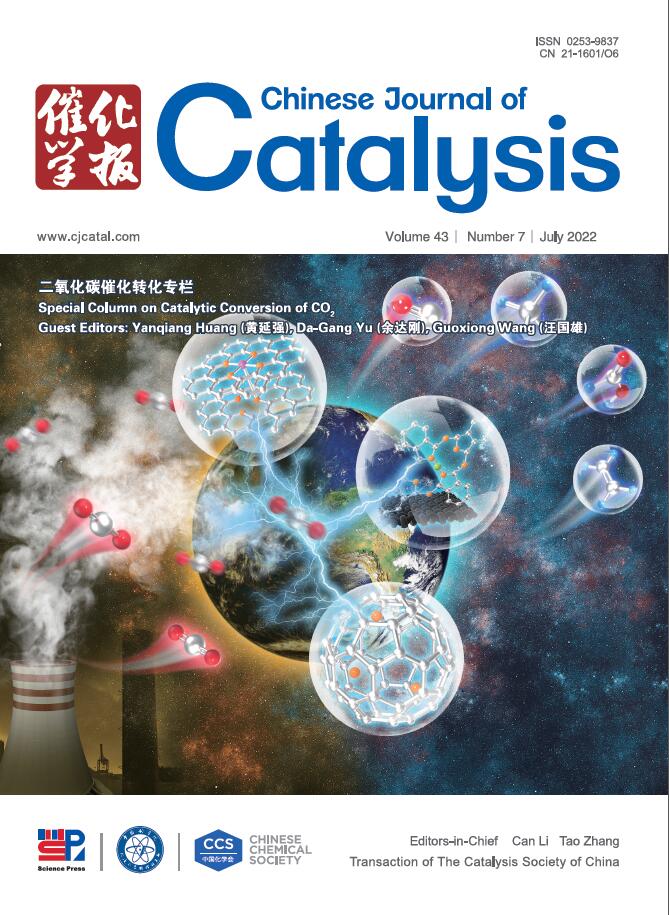Pt-C3N4单原子催化剂催化木质纤维素光重整可持续产H2和乳酸
IF 17.7
1区 化学
Q1 CHEMISTRY, APPLIED
引用次数: 0
摘要
利用太阳能从木质纤维素中联合生产氢气和增值生化物质被认为是最有可能缓解当前能源危机的技术之一。在这里,我们展示了一种使用氮化碳负载铂单原子光催化剂的具有成本效益的木质纤维素增值光重整策略。该催化剂的析氢速率为6.34 mmol molPt-1 h-1,分别是纳米Pt和原始氮化碳催化剂的4.6倍和30.5倍。同时,单糖氧化生成增值乳酸,转化率高达99%,选择性高达97%。理论计算表明,Pt掺杂后,光生空穴主要集中在金属位上,而光生电子则集中在C3N4上,从而增强了载流子的有效分离。该研究为生物质光精炼厂同时生产绿色H2和生物基化学品提供了一条有前景的途径。本文章由计算机程序翻译,如有差异,请以英文原文为准。
Sustainable co-production of H2 and lactic acid from lignocellulose photoreforming using Pt-C3N4 single-atom catalyst
The co-production of hydrogen and value-added biochemicals from lignocellulose utilizing solar energy has been regarded as one of the technologies most potentially able to alleviate the current energy crisis. Here, we demonstrate a cost-effective photoreforming strategy for lignocellulose valorization using a carbon nitride-supported platinum single-atom photocatalyst. An advanced H2 evolution rate of 6.34 mmol molPt–1 h–1 is achieved over the optimal catalyst, which is around 4.6 and 30.5 times higher compared with the nanosized Pt counterpart and pristine carbon nitride, respectively. Meanwhile, the monosaccharides are oxidized to value-added lactic acid with >99% conversion and extraordinary selectivity up to 97%. The theoretical calculations show that with Pt incorporation, the photogenerated holes are predominantly localized on the metal sites while the photogenerated electrons are concentrated on C3N4, thus enhancing the effective separation of charge carriers. This work provides a promising avenue for the simultaneous production of green H2 and bio-based chemicals by biomass photorefinery.
求助全文
通过发布文献求助,成功后即可免费获取论文全文。
去求助
来源期刊

Chinese Journal of Catalysis
工程技术-工程:化工
CiteScore
25.80
自引率
10.30%
发文量
235
审稿时长
1.2 months
期刊介绍:
The journal covers a broad scope, encompassing new trends in catalysis for applications in energy production, environmental protection, and the preparation of materials, petroleum chemicals, and fine chemicals. It explores the scientific foundation for preparing and activating catalysts of commercial interest, emphasizing representative models.The focus includes spectroscopic methods for structural characterization, especially in situ techniques, as well as new theoretical methods with practical impact in catalysis and catalytic reactions.The journal delves into the relationship between homogeneous and heterogeneous catalysis and includes theoretical studies on the structure and reactivity of catalysts.Additionally, contributions on photocatalysis, biocatalysis, surface science, and catalysis-related chemical kinetics are welcomed.
 求助内容:
求助内容: 应助结果提醒方式:
应助结果提醒方式:


